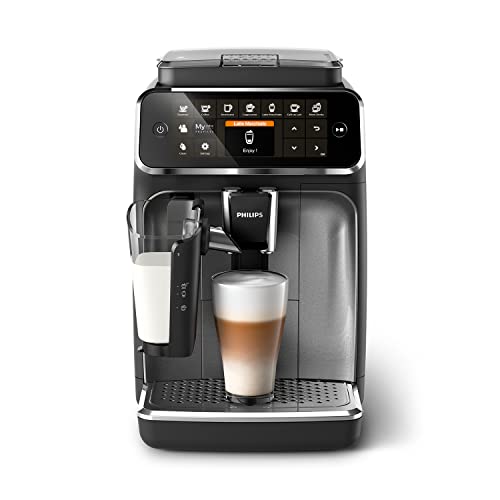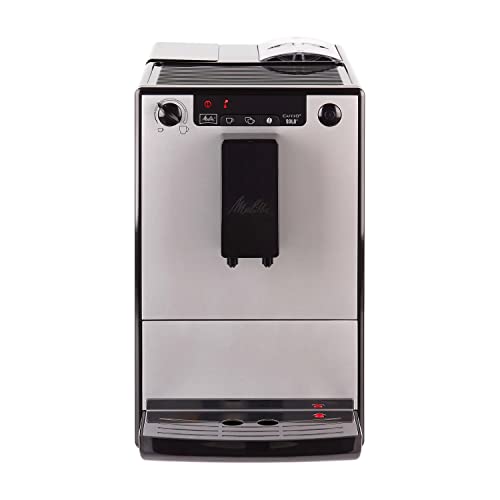Coffee Machine Coffee Beans Isn't As Tough As You Think

2024-12-04 22:55
32
0
본문
 Choosing the Right Coffee Beans For Your Coffee Machine
Choosing the Right Coffee Beans For Your Coffee MachineThe best coffee beans will have a big impact on the flavor of your coffee. This is particularly true for machines that use bean to cup coffee machine home-to cup technology.
They come with a hopper you fill with whole beans. They then automatically grind them to the right size for extraction. They also have a brewing chamber that can hold hot water.
Consistency
Bean-to-cup machines are great for making coffee. They can be used with correct coffee beans to produce an excellent cup of coffee every time. To ensure your coffee is delicious, you must choose the best beans and roast them properly. It is also important to determine the most suitable grind size for your brew method. The grind size is crucial because it determines the speed at which water will pass and how much flavor is extracted. It is also essential to select a grinder of high-end quality, which will create an even grind that is appropriate for the specific brewing method you are using.
For all brewing methods it is recommended to use medium-coarse beans as this grind size will ensure an even extraction and a balanced taste profile. It is important to avoid dark roast beans in a bean to cup filter coffee machine to cup machine, as these tend to be oily and could block the burrs of your grinder. This could lead to a buildup of coffee oils, which will result in a bitter cup of coffee.
Several factors can impact the quality of coffee beans, such as grinding and storage. When beans are stored too long they lose their moisture content and the aromas that make them fragrant. This is why it's essential to purchase freshly coffee beans for your commercial coffee machine. You should also select a medium-to-dark roast, as they are more suitable for beans-to-cup machines.
The best beans for your machine will be determined by your personal preferences and tastes. Some prefer 100% Arabica beans while others might prefer mixing both kinds of beans. There are many roast levels to pick from that range from light to dark. Some roasts are better suited to specific brewing methods, while others can be used in any coffee maker.
The consistency of the grind can also influence the taste of coffee's flavor. A more fine grind allows water to flow through it more quickly, but it can also be more likely to extract too much flavor (a condition called over-extraction). The shape and size of the coffee particles is equally important. If they are of different sizes and shapes, this could affect the way that water moves through the ground. This can cause some areas to be excessively extracted.
Cost-effectiveness
It may seem expensive to purchase a machine of your own however it's more affordable in the long run than purchasing expensive pods. You will also have a wider selection of beans and not be restricted to the selection provided by a coffee rental company. Additionally, you'll save money on maintenance costs and won't need to worry about refills or ongoing service contracts.
There are many types of coffee makers available, and the one that's best for your office depends on your personal preferences and goals. A bean-to-cup machine, for instance, can provide you with the best flavor and the most authentic taste. However, a pod machine offers convenience and a wide range of flavors at a low price.
Bean-to-cup machines are more expensive than pod machines, however they can provide many advantages including less waste and better coffee. They can be used with various beans, making them a great option for offices who want to accommodate the diverse workforce.
The kind of beans you use in your coffee machine will determine the quality and taste of your cup of coffee. Select medium roast beans. They are roasted to just the right amount to give them complex flavors but not so much that they diminish their natural flavor. It's also important to ensure that the beans have been freshly roast. Beans that are old or stale can affect the final product.
The use of ground beans is cheaper than buying pre-ground coffee, but you'll have to buy a grinder and invest in the right equipment. However, it's worth the investment in the long run, because you'll have greater control over the brewing process and be able alter the strength and size of the grind in accordance with your preferences. In addition you'll avoid the toxins and additives that are present in commercially manufactured ground coffees. In addition, you'll reduce the amount of waste you produce, as pods can be expensive and difficult to recycle due to their aluminum and plastic components.
Variety
There are many varieties of coffee beans to choose from, each offering a unique flavor profile that can be used to complement a variety of drink and food recipes. Some are roasted darker than others, which may affect the flavor and aroma of your coffee. Others are roasted lighter, which can create more floral or fruity flavor.
Choosing the right type of coffee beans for your machine can be difficult. There are a lot of variables to consider, including the origin and processing method and the roast's color. It is also essential to choose fresh beans that have been roasted recently. Beans that have been roasted too long may lose their aroma and flavor.
There isn't a specific type of coffee that is best to be used in the Automatic Bean To Cup Machine-to-cup machines. However there are certain types of coffee that are more appropriate. For example, dark roasts are ideal for drinks based on espresso, whereas lighter roasts are better for filter coffee. A good rule of thumb is to play with different varieties and flavors until you find the ones that fit your preferences.
Bean-to-cup coffee makers are convenient quick and flexible. They can be used to make coffee, cappuccino or latte, as well as other milky beverages. They are a favorite among those who prefer a hands-free experience. You don't have to be concerned about pressing the portafilter, or tapping the cake trays. They are available from the majority of major retailers. They are ideal for use at home bean to cup coffee machine.
Coffee is made up of two basic ingredients that are water and coffee beans. For a cup that is delicious it is essential to use water that has been filtered and beans of high-quality. The beans you choose will make a difference in the aroma, flavor and consistency of your coffee.
It is not enough to pay attention to the beans' quality and the flavor, but also the aroma and color of the roast. A light roast has more subtle flavor, whereas medium roasts have a balanced and full-bodied taste. Dark-roasted beans work best for espresso machines, while light and medium roasts are better suited for filter coffee and machine-to-cup.
De'Longhi coffee bean grinders can be used to make espresso or filter coffee. The bean-to-cup machine can grind whole coffee beans into finely ground and make a cup in under a minute. It can also make cappuccino, or Chai.
Environment-friendly
Sustainable coffee is crucial since it's one of the most loved beverages in the world. Sustainability in coffee includes economic, social, and environmental factors. When buying coffee beans look for Fair Trade or UTZ certificates to ensure that farmers receive an equitable price for their harvest and aren't using harmful chemicals. These certifications also help protect the environment.
Despite its many benefits, coffee is still a crop that consumes a lot of resources. Processing, growing and packaging coffee maker bean to cup beans produces greenhouse gases, deforestation and water pollution. However, the use of sustainable coffee beans and brewing techniques can help reduce these impacts. Recent life-cycle assessments (LCAs) looked at the environmental impact of different brewing systems. The study found that a Moka pot and single-serve plastic bottles with an aluminum top seal had the highest environmental footprints and the former causing the most damage to non-renewable resources, and the latter generating large quantities of waste.
According to the scientists who conducted the LCA the cultivation and production are the two major contributors to the environmental footprint of a cup coffee. Coffee cultivation is energy intensive and involves a large amount of fertilizers, pesticides, and machinery that emit greenhouse gases. It is also a major factor in deforestation within the Amazon basin.
In fact, in a study from 2021, it was discovered that coffee produced using the least sustainable methods generated more CO2 than the same amount of cheese and was half as much as the emissions from beef. This was due to the use of intensive fertilization, irrigation and the use nitrogen oxide emitting pesticides. But the good news is that if we switch to sustainable practices, the negative impact could be significantly reduced.
You can make your coffee eco-friendly by using reusable cups or mugs, buying Fair Trade or UTZ-certified beans, and using an efficient coffee maker. If you're planning on using coffee pods, make sure you choose ones that are compostable 100. You can also purchase loose coffee grounds and use them to enrich the soil in your garden.

댓글목록0
댓글 포인트 안내